
Alastair Philip Wiper captures "over-the-top kitsch" 1970s doomsday bunker in Las Vegas
British photographer Alastair Philip Wiper has documented a subterranean fallout shelter in Las Vegas, Nevada, complete with a four-hole putting green surrounded by faux pine trees and painted scenery.
Built in 1978 by millionaire Jerry Henderson, the doomsday bunker stretches across 1,400 square metres. Henderson lived in the underground house for five years with his wife Mary up until his death in 1983.
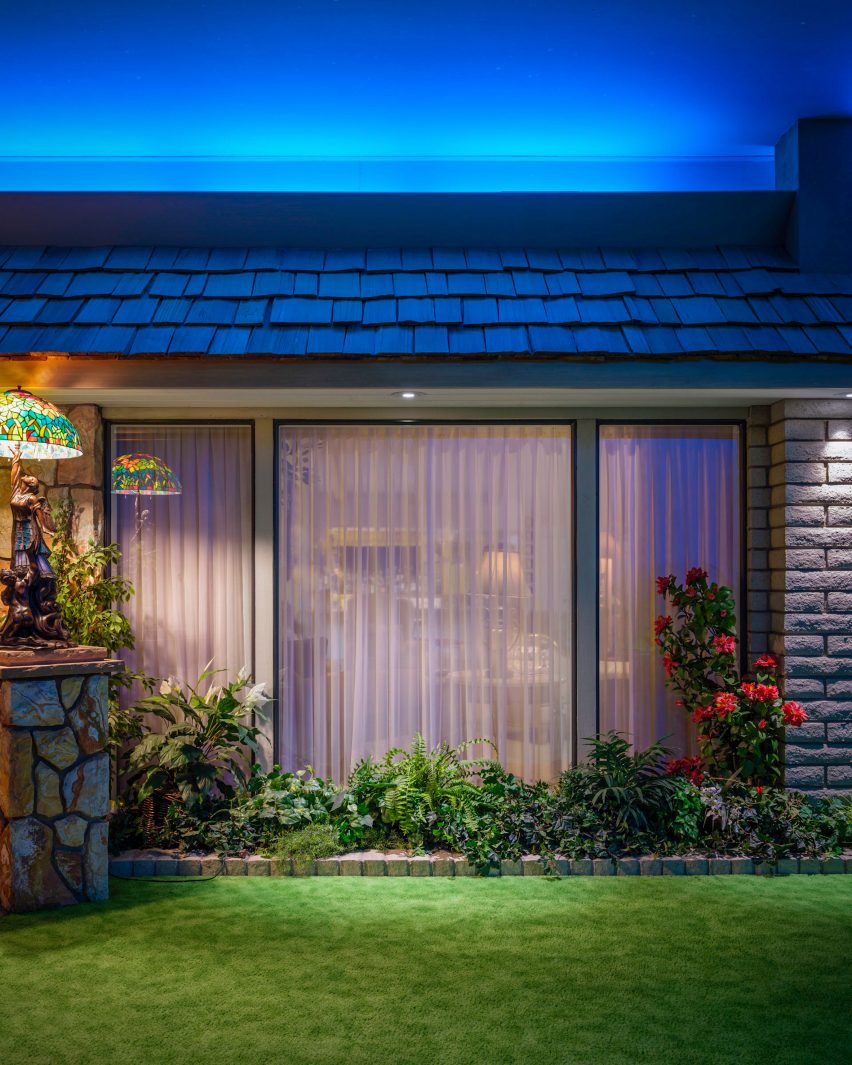
"Jerry was a millionaire who advocated for underground living," Wiper said, adding that Henderson also had a similar bunker in an undisclosed location in Colorado.
"He thought that all people would be better off living underground, not just in case of an apocalypse but in all situations."
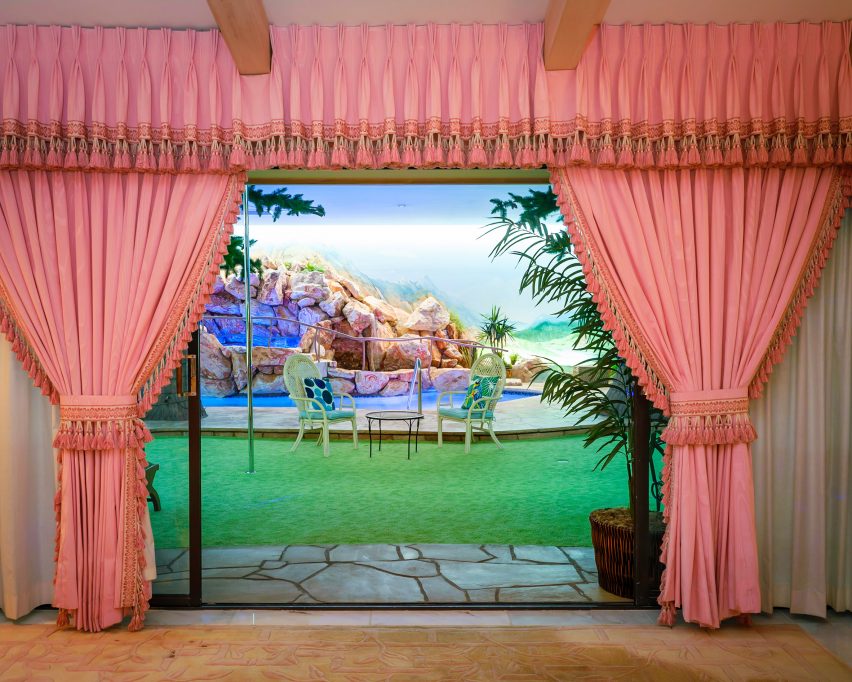
The shelter reflects the era in which it was designed, with details from decorative luminaires to statement pink curtains and toilet seats evoking 1970s interiors.
Other features include a swimming pool, two hot tubs, a dance floor with a pole, a four-hole putting green, a bar, a barbecue and a sauna.
"It seems like Jerry liked to party," Wiper told Dezeen. "The house is made for entertaining. It's not a house designed for a recluse."
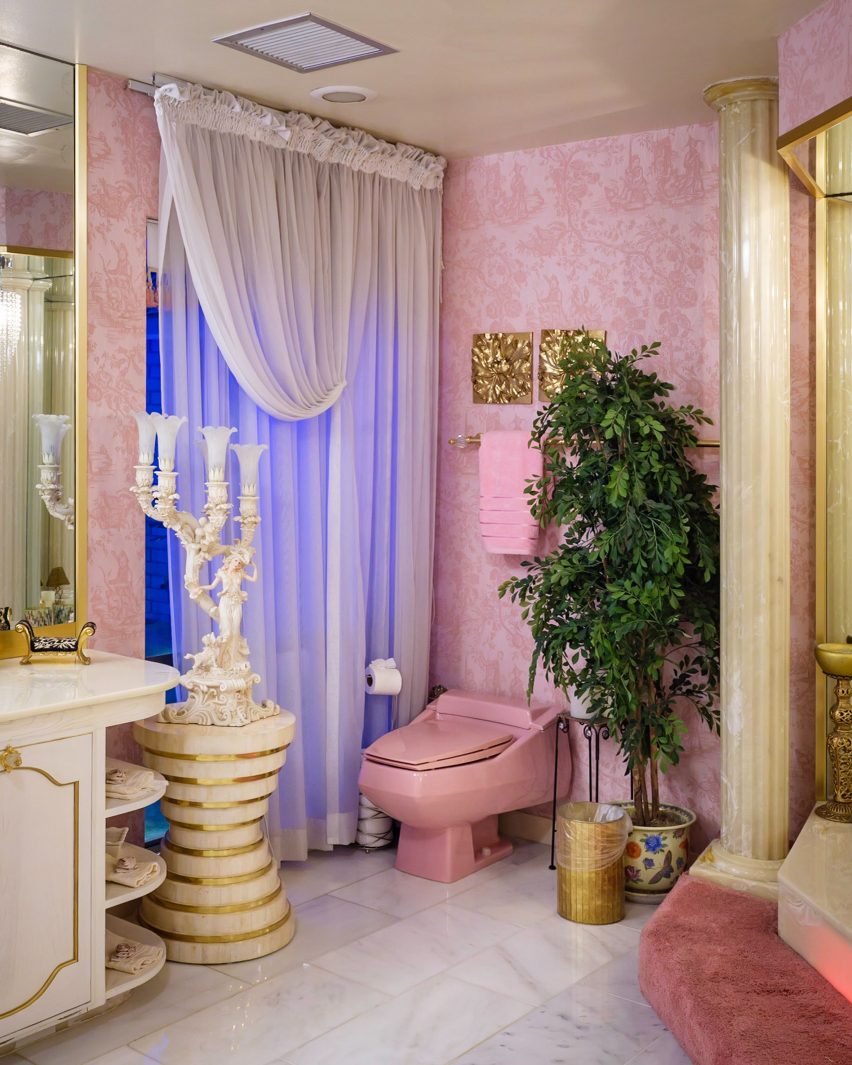
Artificial pine trees and faux rock walls emulate an outdoor garden space, while painted backdrops depicting life-like landscapes surround the shelter.
Lighting simulates different times of day, with details like the pool and the garden picked out with colourful fluorescents that add to the eccentric nature of the residence.
"Beauty is in the eye of the beholder," said Wiper. "But if you have a penchant for over-the-top kitsch, insane colour combinations and James Bond villain-lair aesthetics then you would be in heaven at this place."
Henderson's underground house is now owned by the Church of Perpetual Life, an organisation involved with cryonic preservation that aims to extend human life, which Wiper explored in a 2023 feature for Bloomberg.
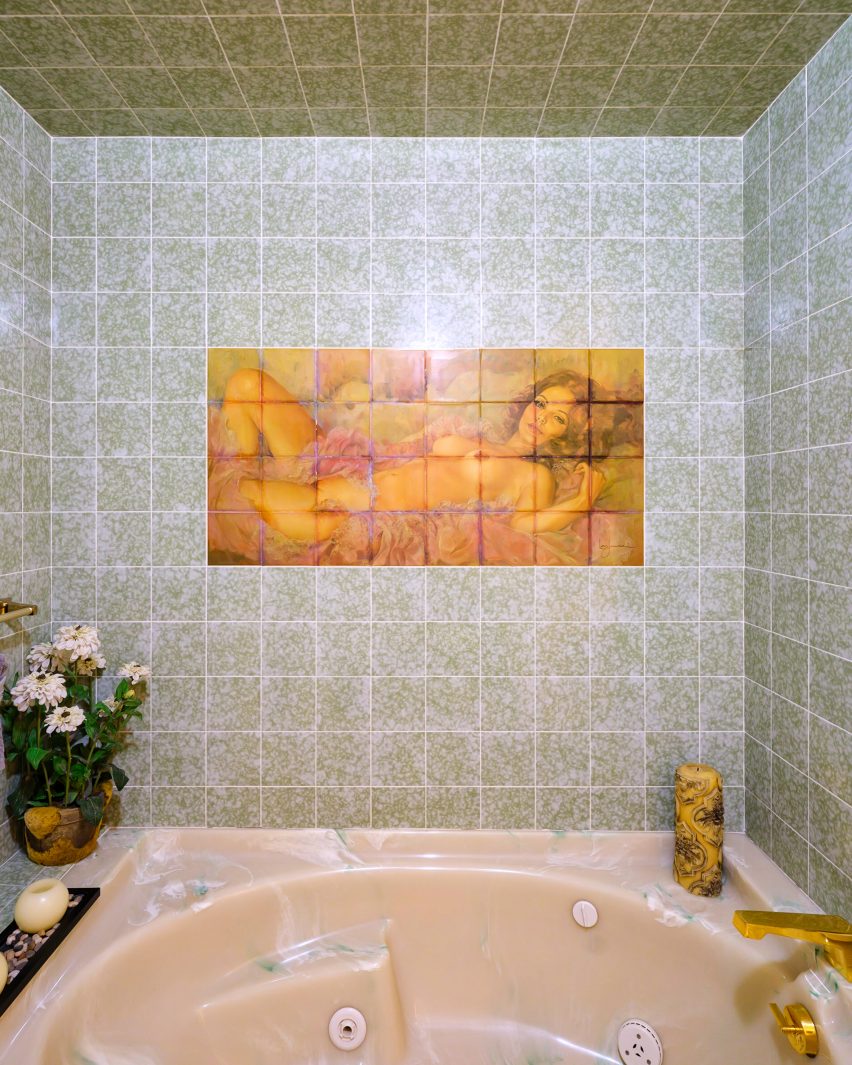
Wiper documented the residence as part of an ongoing project called "How We Learned to Stop Worrying", about the many architectural interpretations of the word "nuclear".
"I'm looking for all sorts of unusual locations that are associated with nuclear and when I came across the house, it fit perfectly," Wiper said. "It's so eccentric and flamboyant."
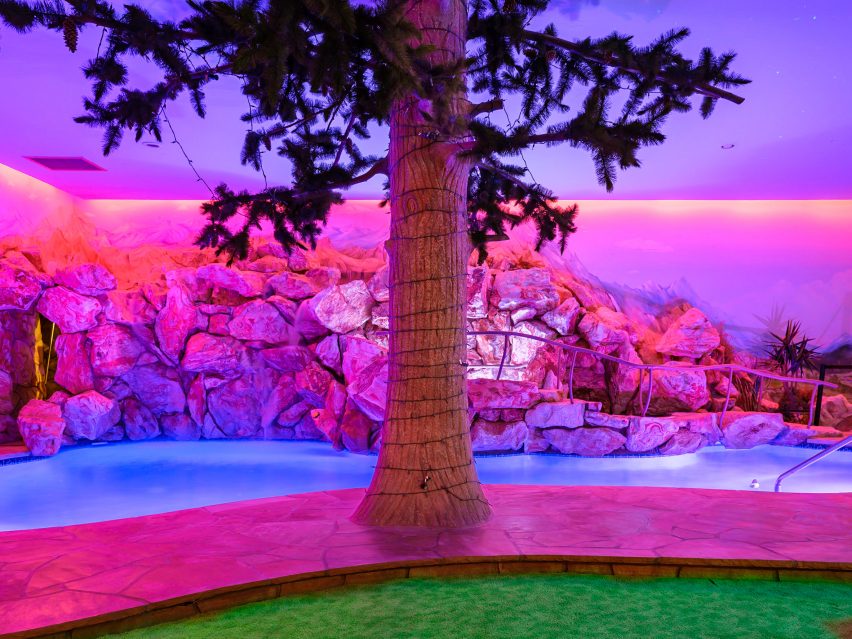
Wiper's latest photography book titled Building Stories, published by the Danish Architectural Press, also includes the underground house among a mix of other surreal buildings including a spooky skiing resort and a nuclear missile control centre.
It is the follow-up to his previous book Unintended Beauty, which focuses on industrial buildings such as factories and power stations.
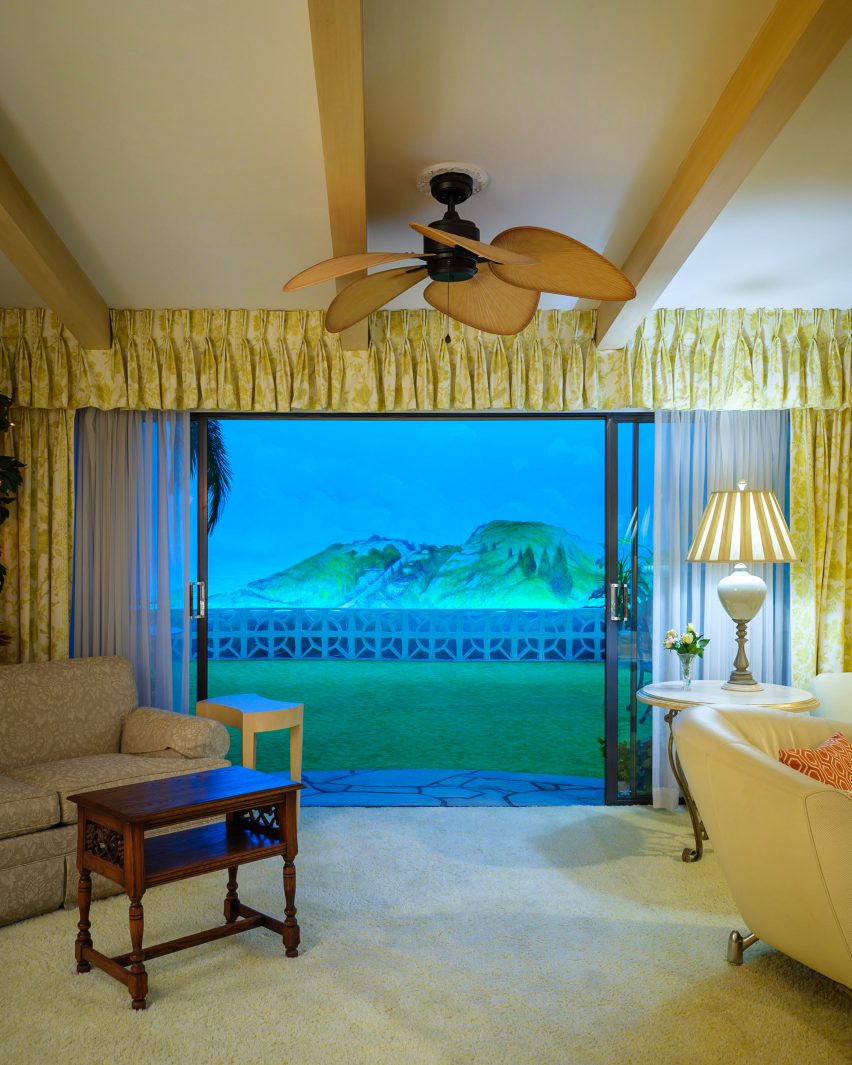
"I look for locations that are out of the ordinary, places that tell a story and which people don't get to see every day, places I want to visit myself," the photographer explained.
"If there is something absurd, taboo or humorous about the location then all the better."
The photography is by Alastair Philip Wiper.